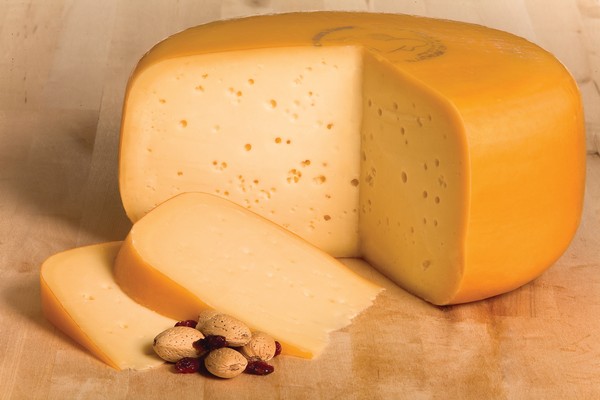Gouda Cheese

Gouda cheese making is a traditional process that involves curdling milk, cutting the curds, and pressing them into distinctive round shapes before aging for several weeks to develop its signature nutty and creamy flavor.
Marthinus StrydomThe Story
Gouda cheese is a semi-hard cheese that originated in the Netherlands. It is named after the city of Gouda, which was a prominent cheese trading center in the 17th century. The cheese has been produced in the region for over 800 years, with early versions being made using raw milk from cows grazing on the fertile meadows of the Dutch countryside.
Gouda cheese became more popular in the 19th century, when Dutch cheese makers began exporting it to other countries. It gained a reputation as a high-quality cheese with a nutty, buttery flavor and a smooth, creamy texture.
Today, Gouda cheese is still produced in the Netherlands and is also made in many other countries, including the United States. It comes in a range of flavors, from mild to aged, and can be made from either pasteurized or unpasteurized milk. It is a versatile cheese that is often used in cooking or enjoyed on its own, either as a snack or as part of a cheese board.

Subscripe to my Facebook page.
Subscripe to my Youtube channel.
© All recipes are copyright protected by TheCultureCook.com unless the recipe was adapated from another source. All recipes are uniquely crafted and adapted by TheCultureCook.com. Copyright of some or all of the text reside with the original author.
Ingredients
Method
- Warm the milk up to 32º Celsius or 90º Fahrenheit.
- Add the Flora Danica culture then stir thoroughly.
- Cover and leave it to ripen for 15 minutes.
- Add the Calcium Chloride and stir.
- Add in the diluted Rennet then leave it to set for 45 minutes to 1 hour or until you have a clean break.
- Carefully cut the curd into 1cm cubes
- Leave it to rest for an extra 10 minutes
- Pour off a third of the whey.
- Slowly add 80ºC/175ºF water to the curd until the temperature reaches 33ºC or 92ºF.
- Stir continuously then leave it to rest for 10 minutes.
- Drain off the whey to the level of the curds.
- Slowly add more water at 80ºC or 175ºF to the curds until the temperature reaches 38ºC or 100ºF.
- Leave the curd for 30 minutes.
- Pour out all remaining whey.
- Move the curds into a cloth lined Tomme mould immediately while making sure to handle the curds very gently so as not to break them
- Press the curd at 10kgs for about 30 minutes.
- Remove, flip and then redress.
- Press again at 20kg for 30 minutes.
- Remove, flip and then redress.
- Press once more at 25kg for 12 hours.
- Remove and then unwrap the cheese
- Soak the cheese in saturated brine for 12 hours and turn the cheese every 3 hours to ensure even coverage. Use cheese salt.
- Remove the cheese and pat dry.
- Air dry at 10°C for 3 weeks.
- Wax or Vacuum Seal
- Age the cheese at 10º Celsius or 50º Fahrenheit for 3 to 9 months.
- Turn cheese about 3 to 4 times a week.
